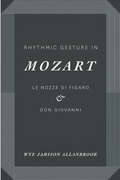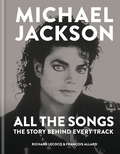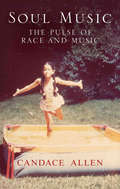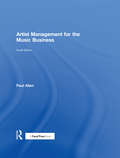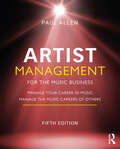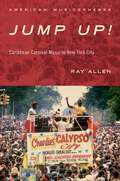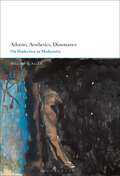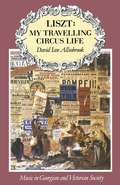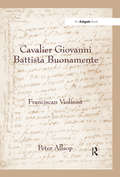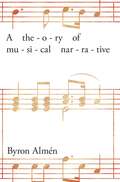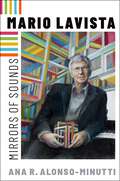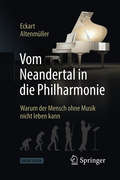- Table View
- List View
Rhythmic Gesture in Mozart: Le Nozze di Figaro and Don Giovanni
by Wye Jamison AllanbrookWye Jamison Allanbrook’s widely influential Rhythmic Gesture in Mozart challenges the view that Wolfgang Amadeus Mozart’s music was a “pure play” of key and theme, more abstract than that of his predecessors. Allanbrook’s innovative work shows that Mozart used a vocabulary of symbolic gestures and musical rhythms to reveal the nature of his characters and their interrelations. The dance rhythms and meters that pervade his operas conveyed very specific meanings to the audiences of the day.
Rhythmic Gesture in Mozart: Le Nozze di Figaro and Don Giovanni
by Wye Jamison AllanbrookWye Jamison Allanbrook’s widely influential Rhythmic Gesture in Mozart challenges the view that Wolfgang Amadeus Mozart’s music was a “pure play” of key and theme, more abstract than that of his predecessors. Allanbrook’s innovative work shows that Mozart used a vocabulary of symbolic gestures and musical rhythms to reveal the nature of his characters and their interrelations. The dance rhythms and meters that pervade his operas conveyed very specific meanings to the audiences of the day.
Rhythmic Gesture in Mozart: Le Nozze di Figaro and Don Giovanni
by Wye Jamison AllanbrookWye Jamison Allanbrook’s widely influential Rhythmic Gesture in Mozart challenges the view that Wolfgang Amadeus Mozart’s music was a “pure play” of key and theme, more abstract than that of his predecessors. Allanbrook’s innovative work shows that Mozart used a vocabulary of symbolic gestures and musical rhythms to reveal the nature of his characters and their interrelations. The dance rhythms and meters that pervade his operas conveyed very specific meanings to the audiences of the day.
Michael Jackson: The Story Behind Every Track
by François Allard Richard LecocqPlease note: this edition is text only and does not contain images.This is the full story of every single song that Michael Jackson recorded and released during his long and remarkable solo career.With fascinating stories and detailed information on every track - as well as key early songs with The Jackson Five and his legendary dance moves and videos - All the Songs is the complete history of one of the greatest musical legacies of all time.Arranged chronologically by album, expert authors Lecocq and Allard explore the details behind early hits such as ABC and I Want You Back, to solo masterpieces such as Don't Stop 'Til You Get Enough, Billie Jean, Beat It, Smooth Criminal, Black or White, This Is It and more - including outtakes, duets and rare tracks.Explore the magic behind the King of Pop's music with this in-depth, captivating book.
Current Directions in Ecomusicology: Music, Culture, Nature (Routledge Research in Music)
by Aaron S. Allen Kevin DaweAWARD WINNER OF THE 2018 SOCIETY OF ETHNOMUSICLOGY ELLEN KOSKOFF PRIZE This volume is the first sustained examination of the complex perspectives that comprise ecomusicology—the study of the intersections of music/sound, culture/society, and nature/environment. Twenty-two authors provide a range of theoretical, methodological, and empirical chapters representing disciplines such as anthropology, biology, ecology, environmental studies, ethnomusicology, history, literature, musicology, performance studies, and psychology. They bring their specialized training to bear on interdisciplinary topics, both individually and in collaboration. Emerging from the whole is a view of ecomusicology as a field, a place where many disciplines come together. The topics addressed in this volume—contemporary composers and traditional musics, acoustic ecology and politicized soundscapes, material sustainability and environmental crisis, familiar and unfamiliar sounds, local places and global warming, birds and mice, hearing and listening, biomusic and soundscape ecology, and more—engage with conversations in the various realms of music study as well as in environmental studies and cultural studies. As with any healthy ecosystem, the field of ecomusicology is dynamic, but this edited collection provides a snapshot of it in a formative period. Each chapter is short, designed to be accessible to the nonspecialist, and includes extensive bibliographies; some chapters also provide further materials on a companion website: http://www.ecomusicology.info/cde/. An introduction and interspersed editorial summaries help guide readers through four current directions—ecological, fieldwork, critical, and textual—in the field of ecomusicology.
Current Directions in Ecomusicology: Music, Culture, Nature (Routledge Research in Music)
by Aaron S. Allen Kevin DaweAWARD WINNER OF THE 2018 SOCIETY OF ETHNOMUSICLOGY ELLEN KOSKOFF PRIZE This volume is the first sustained examination of the complex perspectives that comprise ecomusicology—the study of the intersections of music/sound, culture/society, and nature/environment. Twenty-two authors provide a range of theoretical, methodological, and empirical chapters representing disciplines such as anthropology, biology, ecology, environmental studies, ethnomusicology, history, literature, musicology, performance studies, and psychology. They bring their specialized training to bear on interdisciplinary topics, both individually and in collaboration. Emerging from the whole is a view of ecomusicology as a field, a place where many disciplines come together. The topics addressed in this volume—contemporary composers and traditional musics, acoustic ecology and politicized soundscapes, material sustainability and environmental crisis, familiar and unfamiliar sounds, local places and global warming, birds and mice, hearing and listening, biomusic and soundscape ecology, and more—engage with conversations in the various realms of music study as well as in environmental studies and cultural studies. As with any healthy ecosystem, the field of ecomusicology is dynamic, but this edited collection provides a snapshot of it in a formative period. Each chapter is short, designed to be accessible to the nonspecialist, and includes extensive bibliographies; some chapters also provide further materials on a companion website: http://www.ecomusicology.info/cde/. An introduction and interspersed editorial summaries help guide readers through four current directions—ecological, fieldwork, critical, and textual—in the field of ecomusicology.
Soul Music: The Pulse of Race and Music
by Candace AllenCan music change lives, and classical music in particular? In Soul Music, novelist and former activist of African descent, Candace Allen asks whether the pitched battles between 'our' music and 'their' music of her youth are alive among young people engaged in music study. She follows the beat of music -from Blues, Miles Davis as friend of the family, hiphop, musical to classical -in her own life to places where different cultures meet.Her personal journey takes her to the streets of London and Scotland, Venezuela, where the Sistema scheme has offered thousands of young people a route out of the ghetto mentality through virtuoso musical training, bringing global fame to the charismatic conductor Gustavo Dudamel; to the Middle East, and Daniel Barenboim's East-West Divan Orchestra in which young Israelis and Palestians play side by side; and to Soweto and a pioneering opera project.Candace Allen is a novelist and was the first African-American female member of the Directors Guild of America. Race and music are an integral part of her life, from Miles Davis's close friendship with her father to her marriage to Simon Rattle, and her political activism at Harvard University, Hollywood, and recently for Obama.
Artist Management for the Music Business
by Paul AllenAnyone managing an artist’s career needs to be well versed and have a savvy understanding of the moving parts of the music business. You’ll learn how and why those moving parts "move," as well as how to manage and navigate a music-based career. Artist Management for the Music Business gives you a comprehensive view of how to generate income through music and how to strategically plan for future growth. The book is full of valuable practical insights. It includes interviews and case studies with examples of real-world management issues and outcomes. Updates to this new edition include the importance of online streaming to music careers, how anyone can effectively network, tools for successful negotiation, ways to identify and manage income sources, and guidance on the ever-changing social media landscape of the music business. This book gives you access to resources about artist management and the music business at its companion website, http://www.artistmanagementonline.com. There is no login, and the resources are updated regularly.
Artist Management for the Music Business
by Paul AllenAnyone managing an artist’s career needs to be well versed and have a savvy understanding of the moving parts of the music business. You’ll learn how and why those moving parts "move," as well as how to manage and navigate a music-based career. Artist Management for the Music Business gives you a comprehensive view of how to generate income through music and how to strategically plan for future growth. The book is full of valuable practical insights. It includes interviews and case studies with examples of real-world management issues and outcomes. Updates to this new edition include the importance of online streaming to music careers, how anyone can effectively network, tools for successful negotiation, ways to identify and manage income sources, and guidance on the ever-changing social media landscape of the music business. This book gives you access to resources about artist management and the music business at its companion website, http://www.artistmanagementonline.com. There is no login, and the resources are updated regularly.
Artist Management for the Music Business: Manage Your Career in Music: Manage the Music Careers of Others
by Paul AllenAnyone managing an artist’s career needs to be well versed and have a savvy understanding of the moving parts of the music business. Learn how and why those moving parts "move," as well as how to manage and navigate a music-based career. Artist Management for the Music Business gives a comprehensive view of how to generate income through music and how to strategically plan for future growth. The book is full of valuable practical insights. It includes interviews and case studies with examples of real-world management issues and outcomes. Updates to this new edition include a new chapter for independent, self-managing artists, expanded and updated sections on networking, social media, and streaming, and a basic introduction to data analytics for the music business. This book gives access to resources about artist management and the music business at its companion website, www.artistmanagementonline.com.
Artist Management for the Music Business: Manage Your Career in Music: Manage the Music Careers of Others
by Paul AllenAnyone managing an artist’s career needs to be well versed and have a savvy understanding of the moving parts of the music business. Learn how and why those moving parts "move," as well as how to manage and navigate a music-based career. Artist Management for the Music Business gives a comprehensive view of how to generate income through music and how to strategically plan for future growth. The book is full of valuable practical insights. It includes interviews and case studies with examples of real-world management issues and outcomes. Updates to this new edition include a new chapter for independent, self-managing artists, expanded and updated sections on networking, social media, and streaming, and a basic introduction to data analytics for the music business. This book gives access to resources about artist management and the music business at its companion website, www.artistmanagementonline.com.
Jump Up!: Caribbean Carnival Music in New York (American Musicspheres)
by Ray AllenJump Up! Caribbean Carnival Music in New York City is the first comprehensive history of Trinidadian calypso and steelband music in the diaspora. Carnival, transplanted from Trinidad to Harlem in the 1930s and to Brooklyn in the late 1960s, provides the cultural context for the study. Blending oral history, archival research, and ethnography, Jump Up! examines how members of New York's diverse Anglophile-Caribbean communities forged transnational identities through the self-conscious embrace and transformation of select Carnival music styles and performances. The work fills a significant void in our understanding of how Caribbean Carnival music-specifically calypso, soca (soul/calypso), and steelband-evolved in the second half of the twentieth century as it flowed between its Island homeland and its bourgeoning New York migrant community. Jump Up! addresses the issues of music, migration, and identity head on, exploring the complex cycling of musical practices and the back-and-forth movement of singers, musicians, arrangers, producers, and cultural entrepreneurs between New York's diasporic communities and the Caribbean.
JUMP UP! AM C: Caribbean Carnival Music in New York (American Musicspheres)
by Ray AllenJump Up! Caribbean Carnival Music in New York City is the first comprehensive history of Trinidadian calypso and steelband music in the diaspora. Carnival, transplanted from Trinidad to Harlem in the 1930s and to Brooklyn in the late 1960s, provides the cultural context for the study. Blending oral history, archival research, and ethnography, Jump Up! examines how members of New York's diverse Anglophile-Caribbean communities forged transnational identities through the self-conscious embrace and transformation of select Carnival music styles and performances. The work fills a significant void in our understanding of how Caribbean Carnival music-specifically calypso, soca (soul/calypso), and steelband-evolved in the second half of the twentieth century as it flowed between its Island homeland and its bourgeoning New York migrant community. Jump Up! addresses the issues of music, migration, and identity head on, exploring the complex cycling of musical practices and the back-and-forth movement of singers, musicians, arrangers, producers, and cultural entrepreneurs between New York's diasporic communities and the Caribbean.
Adorno, Aesthetics, Dissonance: On Dialectics in Modernity
by William S. AllenAdorno's aesthetics are one of the most important philosophical analyses of the 20th century, but their development remains unclear. Adorno, Aesthetics, Dissonance is the first book to provide a detailed study of how Adorno's thinking of aesthetics developed and to show the different dimensions that came together to make it uniquely powerful. Principal among these dimensions are his intense interest inmusic and his historical and materialist approach. In addition, by studying how Adorno's aesthetics arose through interactions with different thinkers, particularly Kracauer, Horkheimer, and Schoenberg, it becomes clear that his thought changes in its relation to dialectics. As a result, Adorno's thinking comes to broaden the understanding of aesthetics to include the sphere of sensuality, and in doing sotransforms both aesthetics and dialectics through a notion of dissonance, which in turn has substantial implications for the relation of his thinking to praxis.
Adorno, Aesthetics, Dissonance: On Dialectics in Modernity
by William S. AllenAdorno's aesthetics are one of the most important philosophical analyses of the 20th century, but their development remains unclear. Adorno, Aesthetics, Dissonance is the first book to provide a detailed study of how Adorno's thinking of aesthetics developed and to show the different dimensions that came together to make it uniquely powerful. Principal among these dimensions are his intense interest inmusic and his historical and materialist approach. In addition, by studying how Adorno's aesthetics arose through interactions with different thinkers, particularly Kracauer, Horkheimer, and Schoenberg, it becomes clear that his thought changes in its relation to dialectics. As a result, Adorno's thinking comes to broaden the understanding of aesthetics to include the sphere of sensuality, and in doing sotransforms both aesthetics and dialectics through a notion of dissonance, which in turn has substantial implications for the relation of his thinking to praxis.
Liszt: My Travelling Circus Life (Music in Georgian and Victorian Society)
by David AllsobrookLiszt, a dominant figure in the Romantic movement, has lately been the subject of a number of scholarly studies. However, many aspects of his intermittent relationship with Britain and with a largely philistine British public have necessarily been overlooked in earlier depictions of the broad sweep of his life. Here Dr Allsobrook brings together, for the first time, and in fascinating and varied detail, the story of Liszt's encounters with the English provinces, Scotland and Ireland during the two long tours he made in 1840 and 1841. Using extracts and charming line drawings from the diaries of John Parry, and from Liszt's letters home, the narrative is set in a rich social context.
Cavalier Giovanni Battista Buonamente: Franciscan Violinist
by Peter AllsopGiovanni Battista Buonamente was among the most original and inventive Italian composers of the seventeenth century. Peter Allsop reveals his importance as part of a tradition that stands in direct antithesis to that of the Corellian sonata today regarded as the 'norm'. This development is traced in a series of likely teacher-pupil relationships from Salamone Rossi to Marco Uccellini, the most prolific Italian composers of instrumental ensemble music in the first half of the seventeenth century. The first half of the book sets out what is known of Buonamente's turbulent career as he moved from the courtly environments of the Gonzaga household and Habsburg court to several less auspicious posts at various religious institutions, ending his life as maestro di cappella at the mother house of his order, S. Francesco in Assisi. A fascinating picture emerges of the nature of musical patronage against a background of war and plague in this time of great political instability. The later chapters comprise detailed discussions, supported with over 100 music examples, of the unusually wide range of genres for which Buonamente wrote: sinfonias, free sonatas, sets of variations, canzonas, dances; and he was the first Italian to cultivate the ensemble suite to any extent. The book concludes with an examination of his influence on his probable pupil Marco Uccellini and the interest Buonamente instigated in canonic writing, which was passed via Uccellini to a succession of Modenese composers.
Cavalier Giovanni Battista Buonamente: Franciscan Violinist
by Peter AllsopGiovanni Battista Buonamente was among the most original and inventive Italian composers of the seventeenth century. Peter Allsop reveals his importance as part of a tradition that stands in direct antithesis to that of the Corellian sonata today regarded as the 'norm'. This development is traced in a series of likely teacher-pupil relationships from Salamone Rossi to Marco Uccellini, the most prolific Italian composers of instrumental ensemble music in the first half of the seventeenth century. The first half of the book sets out what is known of Buonamente's turbulent career as he moved from the courtly environments of the Gonzaga household and Habsburg court to several less auspicious posts at various religious institutions, ending his life as maestro di cappella at the mother house of his order, S. Francesco in Assisi. A fascinating picture emerges of the nature of musical patronage against a background of war and plague in this time of great political instability. The later chapters comprise detailed discussions, supported with over 100 music examples, of the unusually wide range of genres for which Buonamente wrote: sinfonias, free sonatas, sets of variations, canzonas, dances; and he was the first Italian to cultivate the ensemble suite to any extent. The book concludes with an examination of his influence on his probable pupil Marco Uccellini and the interest Buonamente instigated in canonic writing, which was passed via Uccellini to a succession of Modenese composers.
Mario Lavista: Mirrors of Sounds (Currents in Latin American and Iberian Music)
by Ana R. Alonso-MinuttiThis is an open access title available under the terms of a CC BY-NC-ND 4.0 International license. It is free to read at Oxford Scholarship Online and offered as a free PDF download from OUP and selected open access locations. Composer, pianist, editor, writer, and pedagogue Mario Lavista (1943-2021) was a central figure of the cultural and artistic scene in Mexico and one of the leading Ibero-American composers of his generation. His music is often described as evocative and poetic, noted for his meticulous attention to timbre and motivic permutation, and his creative trajectory was characterized by its intersections with the other arts, particularly poetry and painting. Lavista was a relational composer; he did not write music as a private enterprise but for and alongside people with whom he established close relations. Understanding analysis as an affective practice, author Ana R. Alonso-Minutti explores the intertextual connections between the multiple texts--musical or otherwise--that are present in Lavista's music. Alonso-Minutti argues that, through adopting an interdisciplinary and transhistorical approach to music composition, Lavista forged a cosmopolitan imaginary that challenged stereotypes of what Mexican music should sound like. This imaginary becomes a strategy of resistance against imperialist agendas placed upon postcolonial peripheries. Departing from traditional biographical and chronological frameworks that exalt masters and masterworks, the author offers a nuanced, personal narrative informed by conversations with composers, performers, artists, choreographers, poets, writers, and filmmakers. Through an innovative mosaic of methodologies, from archival work, to musical and intertextual analysis, oral history, and (auto)ethnography, this book is the first in-depth study of Lavista's compositional career and offers a contextual panorama of the contemporary music scene in Mexico
Mario Lavista: Mirrors of Sounds (Currents in Latin American and Iberian Music)
by Ana R. Alonso-MinuttiComposer, pianist, editor, writer, and pedagogue Mario Lavista (1943-2021) was a central figure of the cultural and artistic scene in Mexico and one of the leading Ibero-American composers of his generation. His music is often described as evocative and poetic, noted for his meticulous attention to timbre and motivic permutation, and his creative trajectory was characterized by its intersections with the other arts, particularly poetry and painting. Lavista was a relational composer; he did not write music as a private enterprise but for and alongside people with whom he established close relations. Understanding analysis as an affective practice, author Ana R. Alonso-Minutti explores the intertextual connections between the multiple texts--musical or otherwise--that are present in Lavista's music. Alonso-Minutti argues that, through adopting an interdisciplinary and transhistorical approach to music composition, Lavista forged a cosmopolitan imaginary that challenged stereotypes of what Mexican music should sound like. This imaginary becomes a strategy of resistance against imperialist agendas placed upon postcolonial peripheries. Departing from traditional biographical and chronological frameworks that exalt masters and masterworks, the author offers a nuanced, personal narrative informed by conversations with composers, performers, artists, choreographers, poets, writers, and filmmakers. Through an innovative mosaic of methodologies, from archival work, to musical and intertextual analysis, oral history, and (auto)ethnography, this book is the first in-depth study of Lavista's compositional career and offers a contextual panorama of the contemporary music scene in Mexico
Vom Neandertal in die Philharmonie: Warum der Mensch ohne Musik nicht leben kann
by Eckart AltenmüllerWarum haben wir Menschen Musik? Wie entfaltet Musik ihre Wirkung? Was geht dabei in unserem Gehirn vor? Fördert Musik die Intelligenz? Dient sie dem Gruppenzusammenhalt? Teilt Musik Emotionen mit? Dieses Buch erklärt die zahlreichen Wirkungen von Musik auf Fühlen und Denken, auf die Organisation von Gruppen sowie auf unsere körperliche und geistige Gesundheit. Im ersten Teil des Werkes werden die evolutionären Grundlagen der Musikwahrnehmung und des Musizierens dargestellt. Die faszinierenden neuen Erkenntnisse zu den positiven, aber auch den negativen Auswirkungen intensiven Musizierens auf das Nervensystem werden in den folgenden Kapiteln geschildert. Glücklicherweise macht Musik nur selten krank – viel wichtiger sind die bislang noch gar nicht ausgeschöpften heilenden Potenziale und die große Macht der positiven Emotionen, die durch Musik ausgelöst werden. Mit diesen erfreulichen und zukunftsweisenden Aspekten schließt das Buch, das jeden ansprechen wird, der eine Liebe zur Musik empfindet, sei es als Musizierender oder als Hörer.
Dancing with Devtas: Drums, Power and Possession in the Music of Garhwal, North India (SOAS Studies in Music)
by Andrew AlterIn the Central Himalayan region of Garhwal, the gods (devtas) enjoy dancing. Musicians - whether ritual specialists or musical specialists - are therefore an indispensable part of most entertainment and religious events. In shamanistic ceremonies, their incantations, songs and drumming 'make' the gods possess their mediums. In other contexts, such as dramatic theatrical renditions of stories of specific deities, actors 'dance' the role of their character having become possessed by the spirit of their character. Through the powerful sounds of their drumming, musicians cause the gods to dance. Music, and more particularly musical sound, is perceived in Garhwal as a powerful force. Andrew Alter examines music and musical practice in Garhwal from an analytical perspective that explores the nexus between musical sounds and performance events. He provides insight into performance practice, vocal techniques, notions of repertoire classification, instruments, ensembles, performance venues, and dance practice. However, music is not viewed simply as a system of organized sounds such as drum strokes, pitch iterations or repertoire items. Rather, in Garhwal, the music is viewed as a system of knowledge and as a system of beliefs in which meaning and spirituality become articulated through potent sound iterations. Alter makes a significant contribution to the discipline of ethnomusicology through a detailed documentation of musical practice in the context of ritual events. The book offers a traditionally thorough historical-ethnographic study of a region with the aim of integrating the local field-based case studies of musical practices within the broader Garhwali context. The work contains invaluable oral data, which has been carefully transliterated as well as translated. Alter blends a carefully detailed analysis of drumming in conjunction with the complex ritual and social contexts of this sophisticated and semantically rich musical practice.
Dancing with Devtas: Drums, Power and Possession in the Music of Garhwal, North India (SOAS Studies in Music)
by Andrew AlterIn the Central Himalayan region of Garhwal, the gods (devtas) enjoy dancing. Musicians - whether ritual specialists or musical specialists - are therefore an indispensable part of most entertainment and religious events. In shamanistic ceremonies, their incantations, songs and drumming 'make' the gods possess their mediums. In other contexts, such as dramatic theatrical renditions of stories of specific deities, actors 'dance' the role of their character having become possessed by the spirit of their character. Through the powerful sounds of their drumming, musicians cause the gods to dance. Music, and more particularly musical sound, is perceived in Garhwal as a powerful force. Andrew Alter examines music and musical practice in Garhwal from an analytical perspective that explores the nexus between musical sounds and performance events. He provides insight into performance practice, vocal techniques, notions of repertoire classification, instruments, ensembles, performance venues, and dance practice. However, music is not viewed simply as a system of organized sounds such as drum strokes, pitch iterations or repertoire items. Rather, in Garhwal, the music is viewed as a system of knowledge and as a system of beliefs in which meaning and spirituality become articulated through potent sound iterations. Alter makes a significant contribution to the discipline of ethnomusicology through a detailed documentation of musical practice in the context of ritual events. The book offers a traditionally thorough historical-ethnographic study of a region with the aim of integrating the local field-based case studies of musical practices within the broader Garhwali context. The work contains invaluable oral data, which has been carefully transliterated as well as translated. Alter blends a carefully detailed analysis of drumming in conjunction with the complex ritual and social contexts of this sophisticated and semantically rich musical practice.
Silent Film Sound (Film And Culture Ser.)
by Rick AltmanBecause silent cinema is widely perceived as having been exactly that-silent-no one has fully examined how souns was used to accompany the films of this era. Silent Film Sound reconsiders all aspects of sound practices during the entire silent film period. Based on extensive origianl reserach and accompanied by gorgeous illustrations, the book challenges the assumptions of earlier histories of this period in film and reveals the complexity and swiftly changing nature of American silent cinema.
